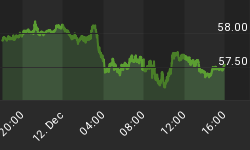Below we'll cover a potentially positive development in market breadth. Wednesday morning's financial headlines may help breadth continue to improve in a bullish fashion:
- Bank Of England Open To More Bond Buys (Stimulus)
- China's Industrial Production Up 16.1%
- Machine Orders In Japan Climb 10.4%
The McClellan Summation Index is a market breadth indicator that is derived from the number of advancing and declining stocks in a given market. The concept of breadth is easy to understand; healthy markets have broad participation during rallies.
The charts below show the current Summation Index (2009) and the Summation Index from the early stages of the 2002-2007 bull market (2003). Both charts show the S&P 500 Index under the Summation Index. When the Summation Index experiences a sharp decline followed by a bottom, it can mark the end of a correction in stocks. Compare the green arrows in the Summation Index with the green arrows on the S&P 500. In 2009, the Summation Index is trying to make a turn simultaneously as stocks try to find their footing after a sharp correction. The Summation Index could break below the green line, which would possibly signal more downside for stocks. Current levels on the Summation Index are very similar to those found at the July bottom in the S&P 500. Stocks rallied off the July lows and the Summation Index continued higher helping confirm the end of the July 2009 correction.

The 2003 Summation Index is shown for comparison purposes.

The Summation Index should not be used in isolation. However, it can help add to the bullish or bearish weight of the evidence when using input from numerous sources and markets. It may be worth monitoring in the days ahead. The November edition of the Asset Class Outlook contains numerous charts which compare and contrast short-term and longer-term corrections within a relatively new bull market, which may be helpful given the volatility in recent weeks. The Asset Class Outlook (ACO) is available for download via this page.
Low Volume Rallies
While market breadth is possibly making a turn for the better, trading volume has been light on rallies. All things being equal, we would like to see volume pick up on rallies and volume drop on declines. Money managers are always concerned about volume (as they should be). We are concerned about low volume. However, as shown in the chart below, low volume may not be a show-stopper for relatively new bull markets.

If it can exceed 1,100, the S&P 500 may face channel resistance between 1,122 and 1,150ish. Regardless of the chart above, we would love to see some strong volume on an up day for stocks. ACO also covers possible S&P 500 support and resistance after the recent bearish break of an ascending wedge.
















